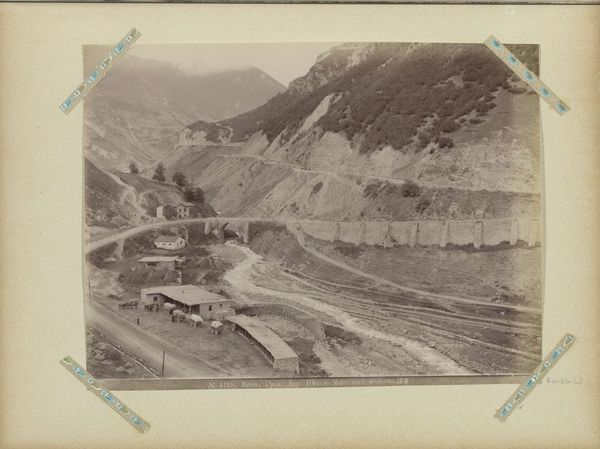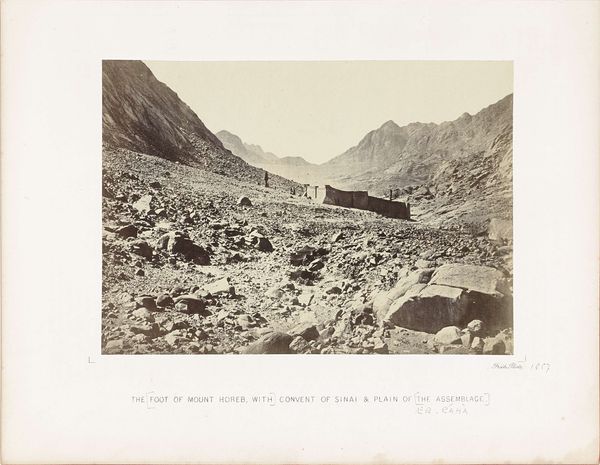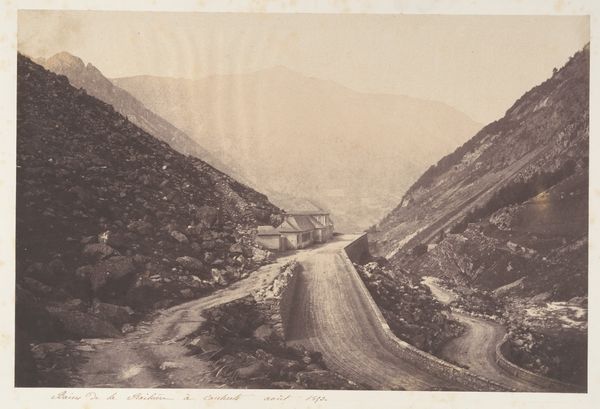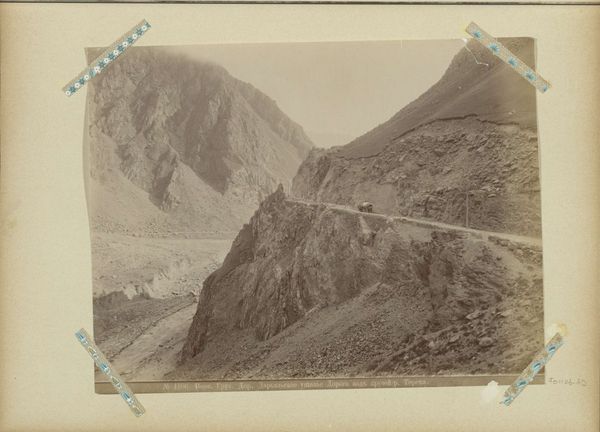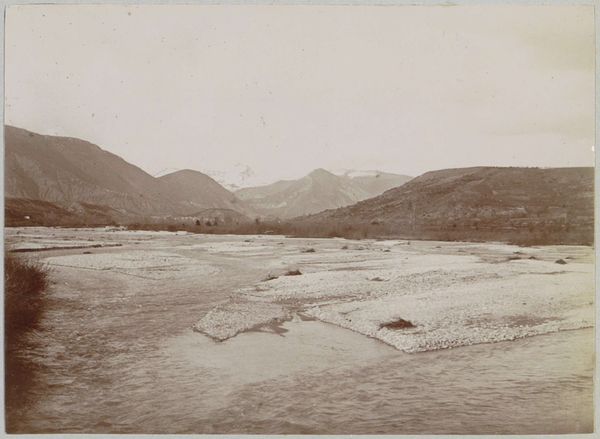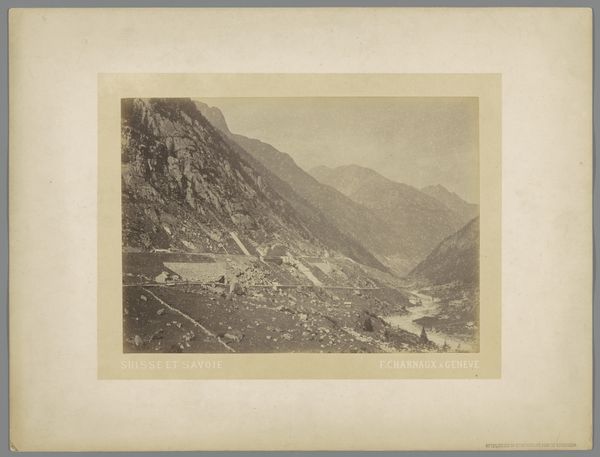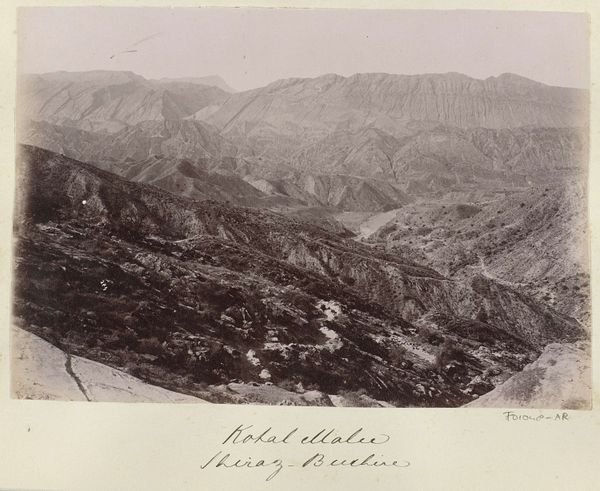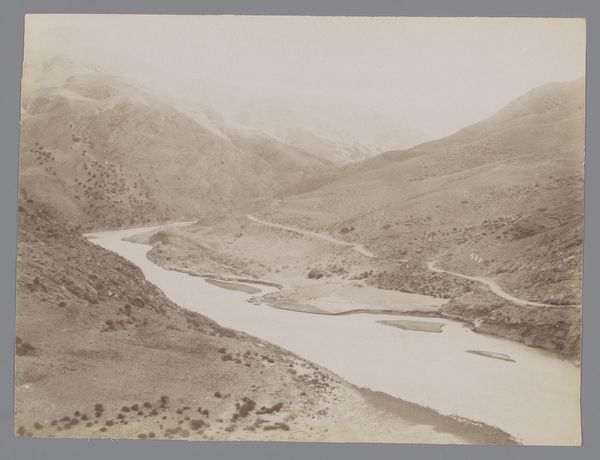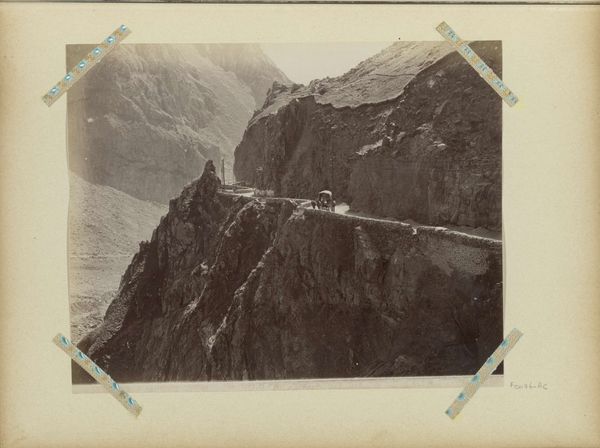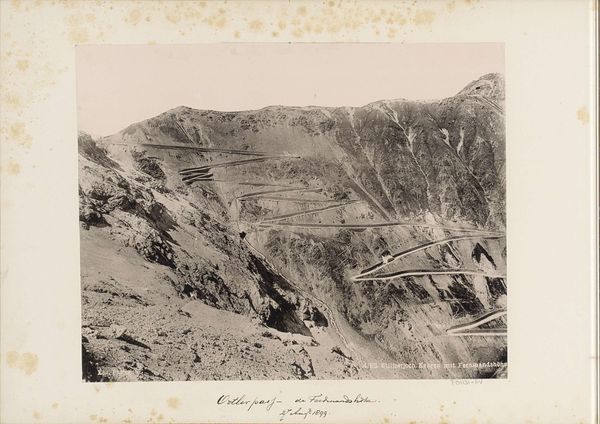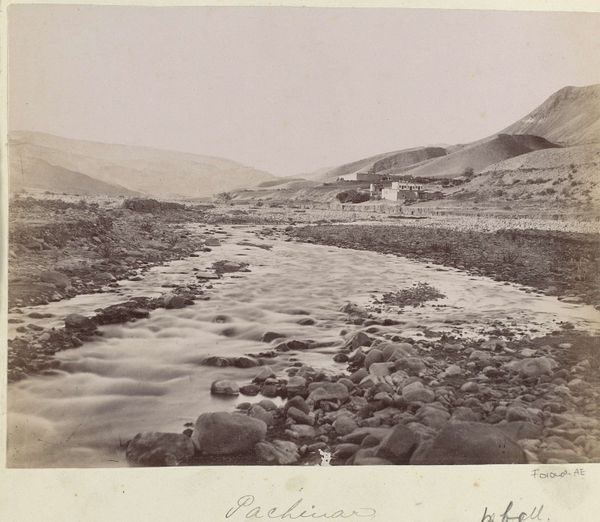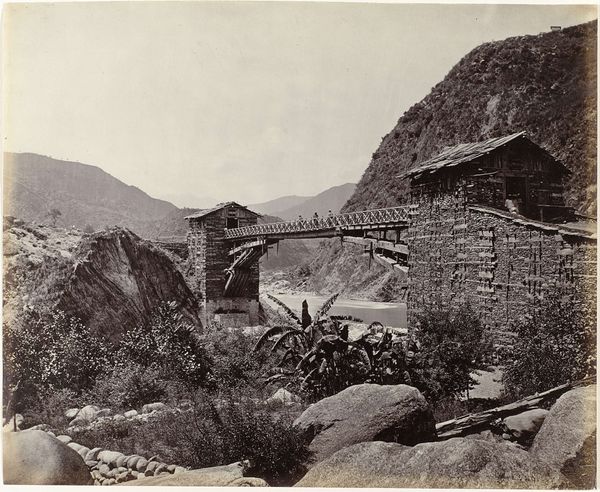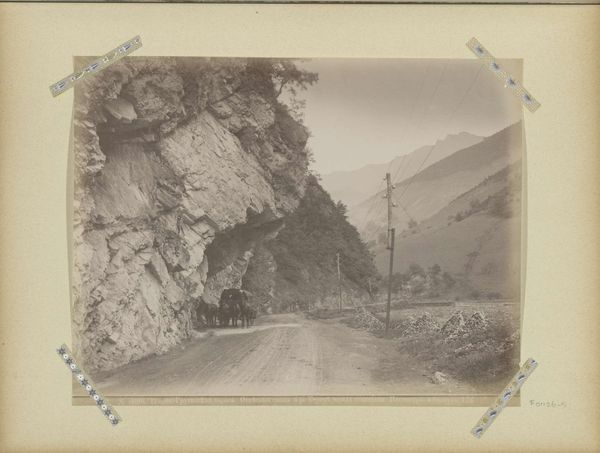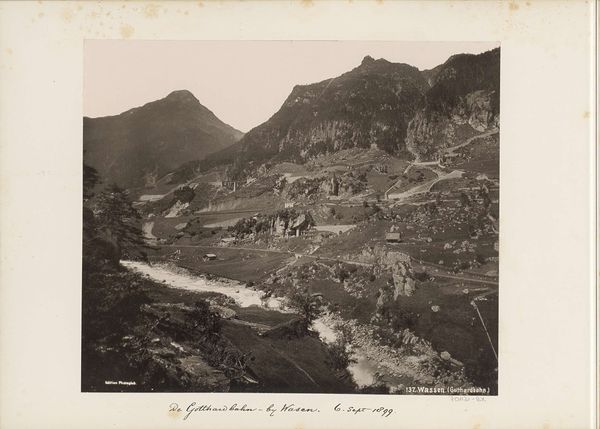
photography, gelatin-silver-print
#
landscape
#
photography
#
orientalism
#
gelatin-silver-print
Dimensions: height 161 mm, width 226 mm
Copyright: Rijks Museum: Open Domain
Curator: Immediately, I feel a strong sense of quiet desolation. It's bleak but not without a strange, melancholic beauty. Editor: This is "Brug over een rivier bij Qazvin op weg naar Mezeh", or "Bridge over a river near Qazvin on the road to Mezeh," a gelatin-silver print by Antoine Sevruguin, taken sometime between 1880 and 1895. It’s an interesting example of late 19th century Orientalist photography. Curator: Orientalist... yes, I can see it. That bridge cutting across the vast landscape... it's like a symbol of connection, but it also seems isolated, almost dwarfed by the scale of nature. The stark, almost monochrome tones definitely emphasize that feeling. Editor: Right. Consider how that bridge visually links to ideas around trade, empire and "the Orient". Photography at the time helped to construct these European perceptions. The bridge itself could be read as a connection, of course, but also as a point of access, control, or even domination. The bridge spans the gap in an environment the photographer would find very different from his home. Curator: It certainly captures a specific kind of cultural gaze. Looking closely, there’s a delicate play of light and shadow, adding a touch of the romantic, don't you think? I see hints of the picturesque tradition. The rocky foreground also lends a rugged beauty to it all. But those rocky planes extend far beyond the location itself. Editor: That aesthetic quality was highly cultivated within European academies, as well as within governing powers. As for symbolism, bridges often represent transition, transformation. A journey. Does this bridge evoke for you notions of bridging divides, crossing over into something new, or some foreign? Curator: Intriguing question, given its creation during a period of immense geopolitical upheaval. Perhaps Sevruguin intended it that way; he may not have, given how photography at the time operated as something to record the unknown. Editor: A compelling perspective! It highlights how complex layers of meaning can exist, reflecting both cultural contexts and the photographer's intentions. Curator: Exactly. The work as a whole seems like an encounter and a statement. An exploration of distance and proximity.
Comments
No comments
Be the first to comment and join the conversation on the ultimate creative platform.
